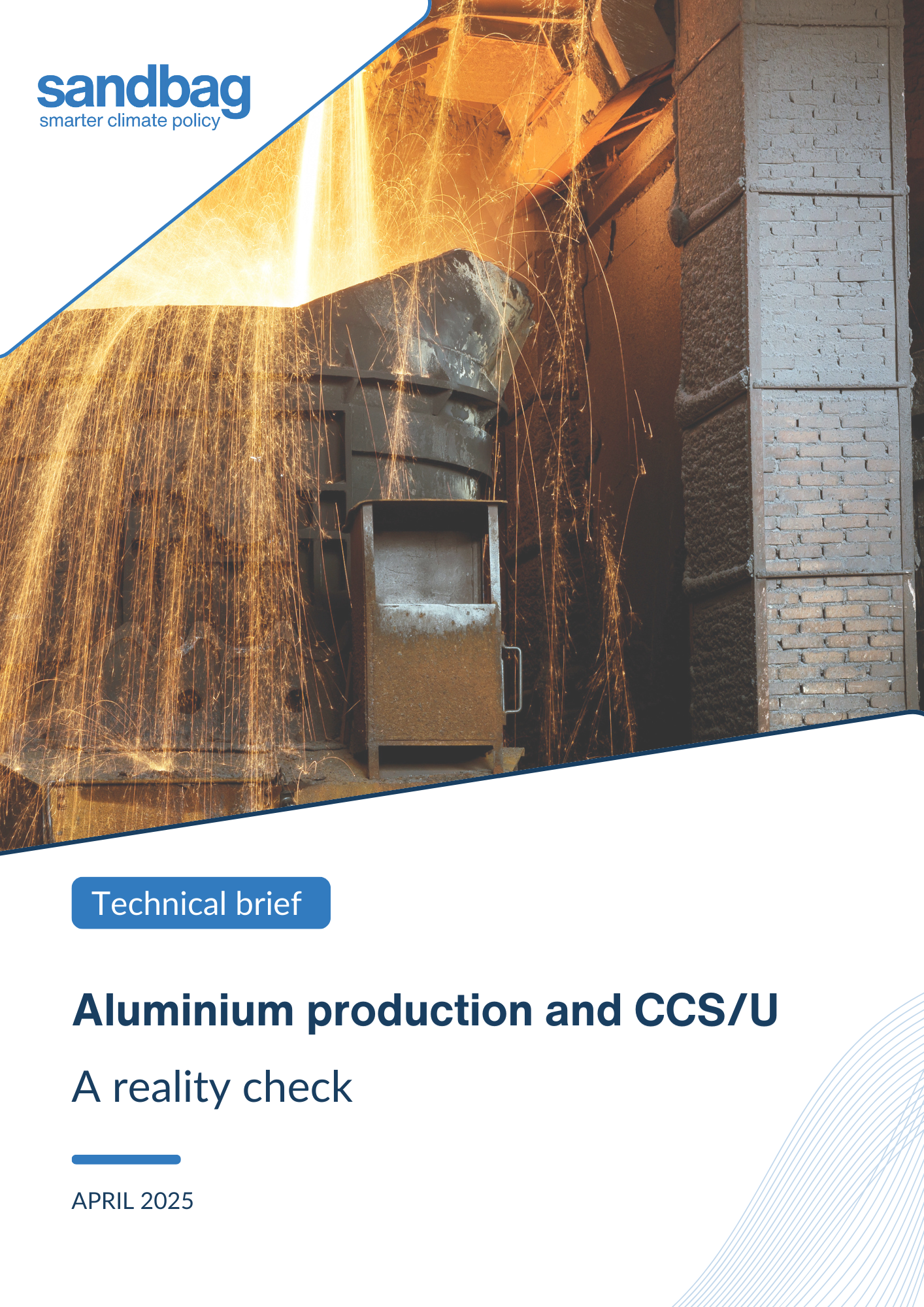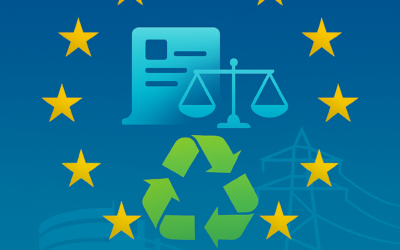The EU’s aluminium industry contributes around 2% of total industrial emissions, driven mainly by energy-intensive refining and smelting processes.
This policy brief explores why Carbon Capture and Utilisation (CCS/U) is unlikely to play a significant role in reducing these emissions — and what alternative pathways industry and policymakers should prioritise instead.

About the technical brief
Following on from our assessment of CCS/U in the iron and steel sector, we conduct another sectoral deep dive into the relevance of CCS/U, this time focusing on aluminium production.
We find that CCS/U is unlikely to play a significant role in decarbonising aluminium production. In both alumina refining and aluminium smelting, the nature and distribution of CO2 emissions present significant technical and economic barriers to widespread CCS/U deployment.
This technical brief highlights more practical and scalable pathways:
- Fuel switching & energy recovery is expected to slash alumina refinery emissions
- Inert anodes are a breakthrough technology to eliminate smelting emissions at the source
- Increasing circularity to reduce demand for primary aluminium and strengthen industrial resilience
- The analysis finds how Europe’s aluminium sector can cut emissions and stay globally competitive — without CCS/U.
Key findings
Alumina refinery emissions can be tackled through fuel switching.
Electrification and energy recovery can reduce refining emissions close to zero well before 2050.
Smelting emissions are hard to capture — and better options exist.
Inert anodes, now nearing commercial deployment, provide a long-term solution that eliminates process CO₂ emissions entirely.
Maximising circularity will be essential.
Secondary aluminium production uses just 5% of the energy of primary aluminium production, and must be maximised in Europe to reap economic as well as environmental benefits.
To deliver real emissions reductions in aluminium production, policy frameworks and investment should focus on:
- Maturing technologies for electrifying refinery processes
- Commercialising low carbon smelting technologies like inert anodes
- Maximising aluminium recycling within Europe
Read the full technical brief to learn more.
Photo by gyn9038 from GettyImages
Related publications
Steel labelling: Beyond the sliding scale
As EU policymakers debate how to certify low-carbon steel, Sandbag’s new briefing analyses the “sliding scale” method — and outlines why it may hinder rather than help decarbonisation. A new model is proposed based on product-specific benchmarks, multi-tier ratings, and circularity incentives.
Scrap Steel at Sea: How ship recycling can help decarbonise European steel production
As Europe seeks to decarbonise its steel industry, a new Sandbag report highlights an overlooked solution: high-quality scrap steel from retired ships. With up to 15 million tonnes of certified scrap available annually, ship recycling could meet 20% of EU steel scrap demand — if policy gaps are addressed.
Sandbag’s feedback to the call for evidence on the Circular Economy Act
Sandbag’s submission to the European Commission’s Circular Economy Act Call for Evidence highlights the importance of improving steel scrap quality, setting minimum recycled content requirements, and aligning carbon incentives to enhance circularity across the EU industrial sector.



